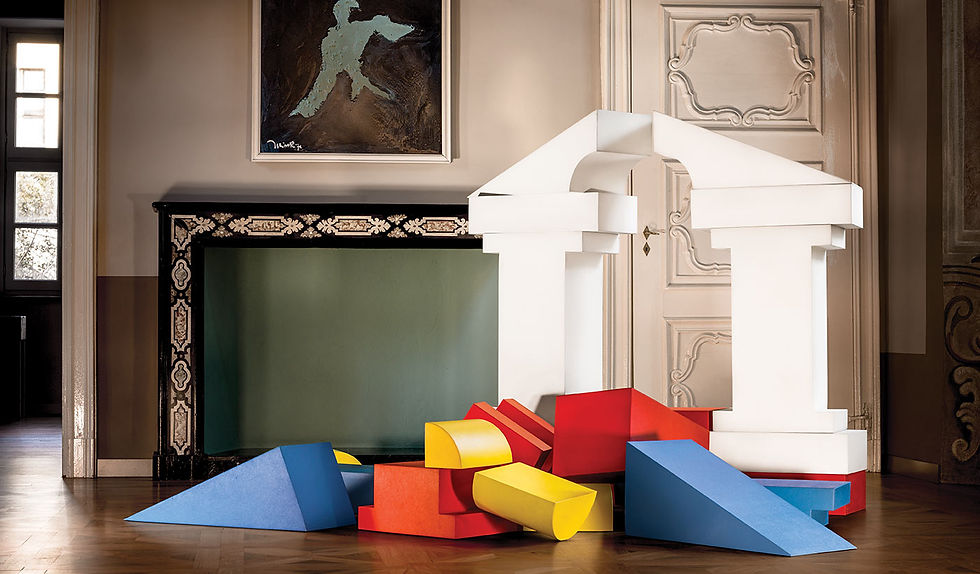CASE STUDY 2
- Shuyin Wang
- Jun 12, 2023
- 2 min read
Baby-lonia
Gufram is an Italian furniture brand whose designs are influenced by POP art, playful and subversive of traditional furniture design (Gufram, no date). It combines toys and furniture in a modular design that can be disassembled and used as furniture as well as a toy. It combines toys and furniture in a modular design that can be disassembled and used as furniture as well as a toy, suitable for both adults and children, like building blocks that can be assembled, and disassembled at will, allowing the user to feel joy of "playing" (Baby-Lonia, no date). In this case, we can realize the importance of shape in gamified furniture. "Baby-lonia" invokes the shape and bright colours of blocks, enlarging ordinary block toys into the size of the furniture, triggering the curiosity of the user through the conflict with the perception of reality. At the same time, the shape is also directive, utilising people's perceptions of the use of blocks in reality, allowing the user to interact with the furniture using their existing perceptions, turning an otherwise passive behaviour into an initiative, and building a habit of interacting with the furniture.

The Pratone chaise longue, launched by Gufram in 1971
Which breaks with the traditional image of a chaise longue by taking the green stalks of plants as its inspiration and allowing it to be reclined at any angle, becoming a disproportionate part of the garden (Pratone Forever Green, no date).
In terms of material, Pratone has used soft polyurethane as a material to enhance the comfort of the chaise longue (Pratone Forever Green, no date). In this case, it can be seen that the way people interact with furniture depends not only on function, but also on appearance and material, making the shape of the furniture strange and surreal, utilising the conflict, making the furniture a medium where reality and imagination converge, moreover bringing the user an unexpected surprise, exploiting the user's curiosity, inspiring the desire to touch the furniture and interact with it. In addition to functionality, gamification can also be applied to the use of materials, allowing the user to feel a touch that is different from visual perception, just like the uncertainty in the process of playing a game, creating a desire to explore.




Comments